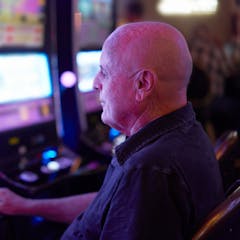
Articles on Neurodegenerative disease
Displaying 21 - 40 of 58 articles

Too much amyloid-beta in the brain has long been considered the cause of Alzheimer’s. New research suggests it might be the opposite.

Nonhuman primates like rhesus monkeys share certain characteristics with people that may make them better study subjects than mice for research on neurodegenerative diseases.

From figuring out where memories are stored to how sensory information translates to behavior, new technologies are helping neuroscientists better understand how the brain works.

From thalidomide to resveratrol, molecules with the exact same chemical properties can have drastically different effects in the body depending on how they’re arranged in space.

People reported having frequent bad dreams at the beginning of the study were twice as likely to develop Parkinson’s compared with those who had them less than once a week.

Our new research with mice visualised how differently aged brains pump out toxic protein waste during sleep.

Across Canada and the United States, more than two million people are living with aphasia and its language and communication challenges.

Brain changes including shrinkage, weakened connections and poorer performance on thinking and memory tests could explain ‘brain fog’ after COVID – even after ‘mild’ cases.

Tay-Sachs is a rare and fatal neurodegerative disorder that most commonly affects children. Researchers have developed the first Tay-Sachs treatment to reach clinical trials.

Understanding when and how neurons die is an important part of research on neurodegenerative diseases like Lou Gehrig’s, Alzheimer’s and Parkinson’s diseases.

Our research suggests the multiplication of protein aggregates in individual regions of the brain, rather than their spread between regions, is key to the progression of Alzheimer’s disease.

An extract of a plant’s fruit in Nigeria could protect against seizure and prevent brain degeneration. It could therefore be studied further for the development of a new antiepileptic drug.

Better awareness of the disease has led to more testing, but there is also an ancestral element to explaining its proliferation in the UK’s far north.

Insight on how a unique protein plays a role in cellular stress responses may provide more clues on how to treat diseases like ALS and Alzheimer’s.

About one in six people who take the most common medication for Parkinson’s disease will develop addictive behaviours. We found whether this happens depends on a person’s unique brain structure.

Not all drug development needs to start from scratch. Sometimes researchers discover that a drug developed for one disease can be used for another. Here a cancer drug may show promise for dementia.

Many pieces leading to Alzheimer’s disease have been identified. To put the pieces together, one scholar argues that the government should launch a Manhattan Project-scale effort to find a cure.

A new type of drug blocks the destruction of neurons in the eye, preventing blindness. The researchers hope that the same therapy can be applied to other common neurodegenerative diseases.

From aggressive patients with Alzheimer’s to frustrated caregivers, dementia is increasingly entwined with violence in private homes and residential facilities.

Symptoms for Huntington’s disease typically only start to be experienced in mid-adulthood.
